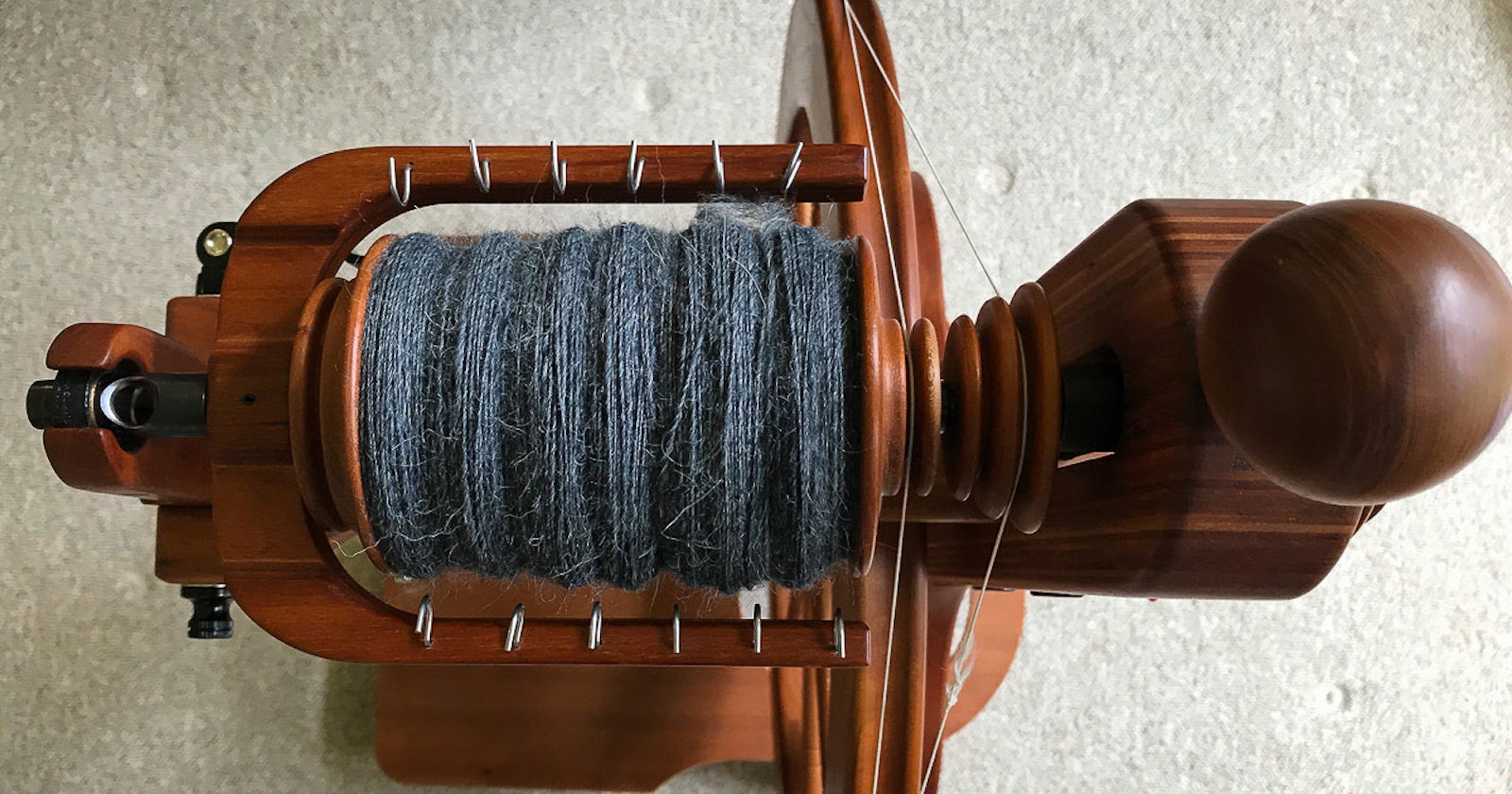I love spinning for a project, constructing the handspun yarn I want, and seeing a thing I made grow right before my very eyes. Many spinners worry that they don’t have the skills to create a garment from beginning to end. Most of those worried spinners actually do have all the skills required but need a nudge to make the process feel manageable. I began planning for a Moonflower Dolman in handspun yarn, and I’d love for you to spin along with me.
Spin + Knit: Sampling
1. Start small.
Once my Ashford Alpaca/Merino arrived in the mail, I immediately started sampling. I almost always begin a new project with a series of small samples by spinning a few yards and folding it into self-plied 2-ply, 3-ply, 4-ply, and beyond. I think of these little snapshots akin to a musician’s scales. On a wheel, I make small changes from one sample to the next by adding more or less twist (moving to a smaller or larger pulley), adjusting gauge (increasing or decreasing wheel tension), and trying different combinations of plies. While sampling, I found that a modified worsted draft—a technique I learned in the Shetland Isles— gave me the yarn I wanted. This gives the alpaca in this wool blend a bit of room to bloom but still produces a consistent, structured yarn.
For a draw in the worsted family, fibers are always drafted in the absence of twist. A. Pinch the point of twist. B. Draft forward (or backward) as usual for worsted draw. C. Let go of the point of twist. (Don’t slide fingers down the yarn—just let go!) D. Return pinching fingers to the point of twist once more.
2. Size up.
For me, choosing the right handspun yarn design is about finding a happy combination of suiting my textile purposes and being comfortable and fun to spin. So, after spinning a variety of samples, I picked a lovely cabled structure (more on cabled yarns) that I think will work. The next step is to spin a small skein so I can spin, ply, wash, and knit a swatch that will be an accurate sample for the final textile.
Swatch! To accurately test my knitted gauge, I wash the yarn after it has been spun, knit and then wash the swatch, lay it flat, and count the stitches and rows per inch once it is totally, completely dry. Then, into the notebook it goes.
3. Keep notes.
Do it. Really. Keeping notes can be a challenge but is incredibly helpful in planning a project and developing our skills as handspinners. Over the years, I’ve developed a spinner’s notebook approach that keeps me on track.
Knitting on the road in Colorado.
Next up: Knitting with handspun yarn!
—Kate Larson
Featured Image: Full bobbins, happy spinner! Photos by Kate Larson




